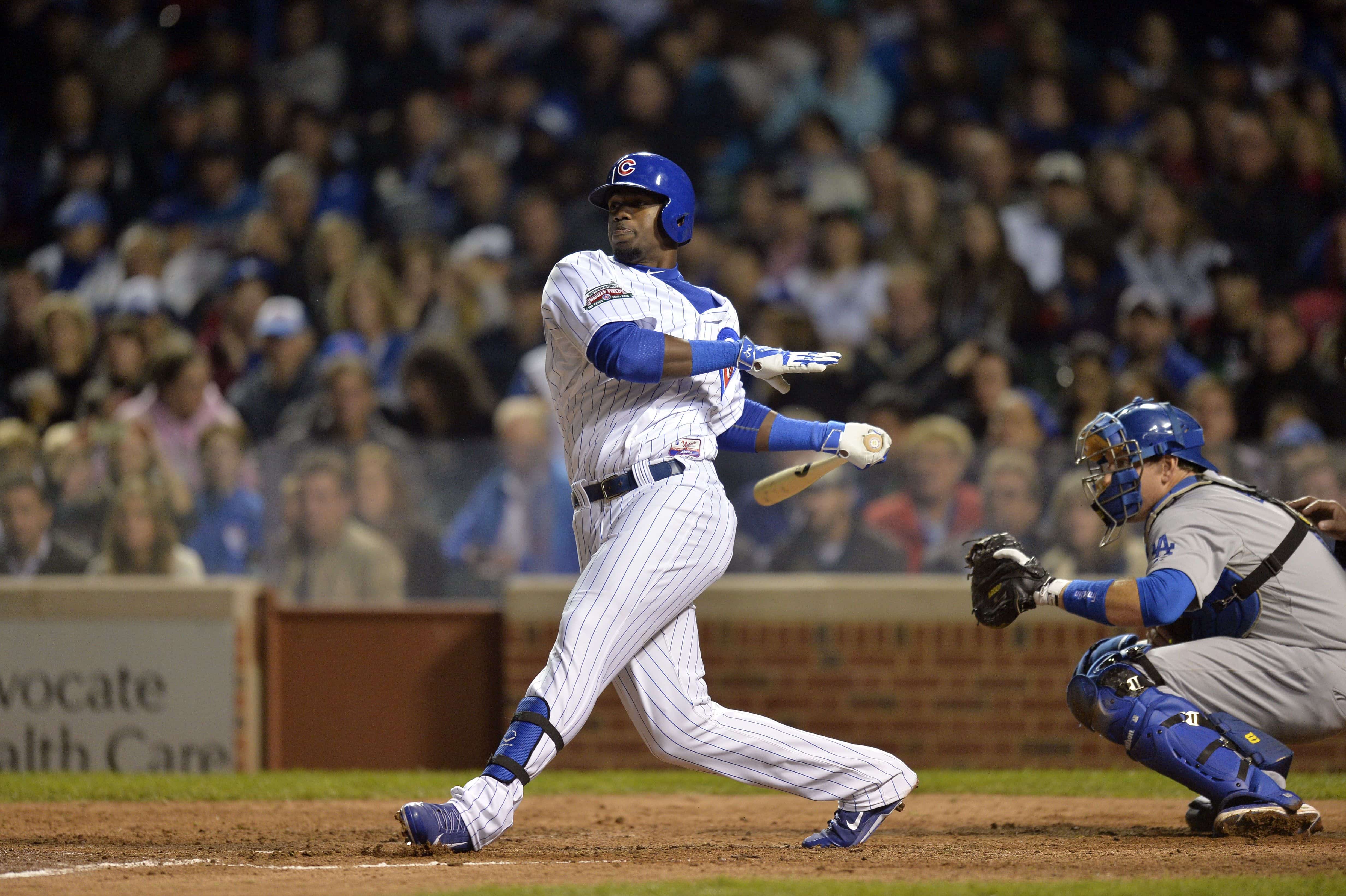
Pair of Young Cubs Terminating Baseballs with Extreme Prejudice
Americans like big. Whether it’s roller coasters, burgers, super-hoppy IPA’s (yes, I know that a lot of you revile these too), Tom Hanks movies, LL Cool J’s defness, or Dolly Parton’s personality, we love stuff that pushes limits.
If you’re a baseball fan, you probably like numbers as well. As advances in the measurement of the game continue, we’re even able to quantify those elements of the sport that had once been defined only by superlative adjectives. Nothing against “screamer” and “frozen rope,” but I like being able to see exactly what those phrases mean.
Enter exit velocity, a statistic that is gaining popularity quickly as more and more people seek to quantify just what happens when Giancarlo Stanton strikes a baseball. According to Baseball Savant, Stanton generates the highest exit velocity of any player in the game. In fact, his 97.73 mph average is nearly 4 ticks higher than second-place Ryan Braun (93.94).
Now, some of you might be thinking, “Big deal, that’s only about as hard as some guys throw.” And you’d be right…sort of. Without getting too detailed about the physics of everything, putting a ball in play requires an exchange of energy between two round objects. As such, the potential for a great deal of energy to be lost in an inefficient transfer (pop-up, bleeder, duck snort) is pretty high.
The average major league fastball approaches the plate at 92 mph, yet only 34 hitters in the game possess an average exit velocity greater than that mark. Only 13 men average greater than 93 mph on batted balls and only 6 are over 93.5 mph, with Stanton standing alone at the top. Now consider that 309 pitchers average greater than 92 mph and 221 greater than 93 mph. In other words, it’s very rare to generate enough power to turn a ball around at a rate faster than what it was thrown.
But you’re not here to read about random stats from across the league or about how hard Giancarlo Stanton hits baseballs, though watching his homer highlights is something I think anyone can enjoy. No, I think you’re hear to learn more about the as-yet-unnamed titular duo who are doing their best to exploit the laws of physics.
When it comes to big, the Cubs have just about cornered the market. The group of Anthony Rizzo, Kris Brant, Jorge Soler, and Kyle Schwarber looks more like a linebacking corps than the core of a lineup. All four have gotten a bit of press for their ability to hit baseballs, but it’s upon the latter two that I’ll now turn your attention. That’s because both Soler (92.93, 14th) and Schwarber (93.84, 4th) reside on that list I mentioned earlier in terms of batted ball velocity.
When I first saw the numbers, I was quite surprised they weren’t transposed. After all, Soler just seems to be abusing pitches lately and he has the higher top-end velo (116 mph) of the pair. But he’s also less consistent and has produced a bit more soft contact, thus dragging the average down.
Of the 13 balls he’s put in play in August, Soler has hit six over 100 mph; two of those were 109 and two more 111. He’s also hit five balls that have left his bat at 85 mph or less. Schwarber has exceeded triple digits on 6 of his 10 batted balls in August and has been under 85 mph three times.
While it’s really fun to review this stuff, it’s not just frivolous information; a ball that is struck harder is more likely to go for a hit. Of the 37 batted balls for which we have data (not every park collects batted-ball velo), Schwarber has topped 100 mph 15 times (40.54%). He’s collected hits on 11 of those (.733 BA) , including 4 home runs. Soler has topped 100 mph 60 times on 149 balls (40.27%) and has collected 35 hits (4 HR) in that sample (.583 BA).
So, basically, what I’m saying is that these would be the two best baseball players on the planet if they could just hit the ball really, really hard every time. The funny thing is that we typically associate hard hits with big hits, but 4 of the last 6 times Soler has eclipsed 100 mph, he’s come away with singles. In a distinct contrast, the last 6 times Schwarber has driven over 100, he has gone single, HR, double, HR, single, double.
I think we’re looking at serious potential for regression from both players at this point, though in different directions. Schwarber is going to start falling back down to earth a bit as that .434 BABIP shrinks back to near-human levels. Soler’s .385 BABIP suggests a little luck as well, but his regression will be toward bigger power numbers. He’s been hitting balls hard enough to put them through walls, but he can’t see to put them over the wall. Having only 5 homers the way he hits the ball is astounding.
As this lineup continues to come together, it’s going to be really fun to see what these guys can do. Well, fun for us. I’m not sure opposing pitchers are quite looking forward to the prospect of facing these two, not to mention the rest of this Cubs lineup, when they’ve actually matured as hitters.
